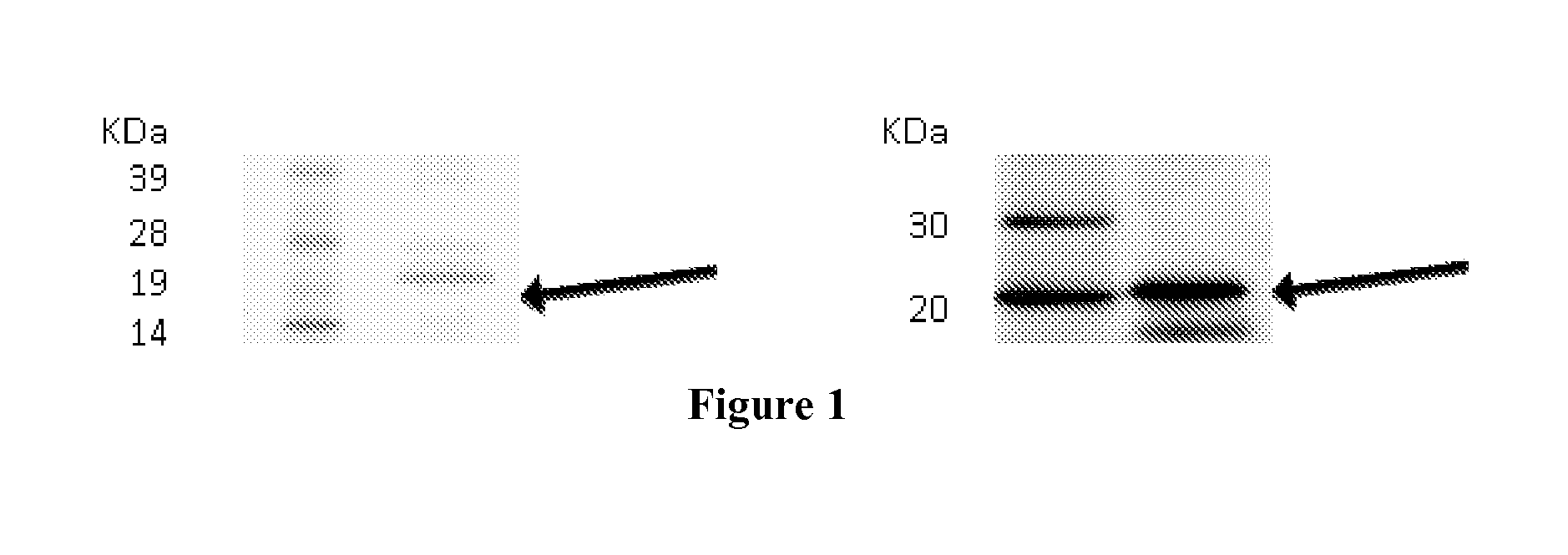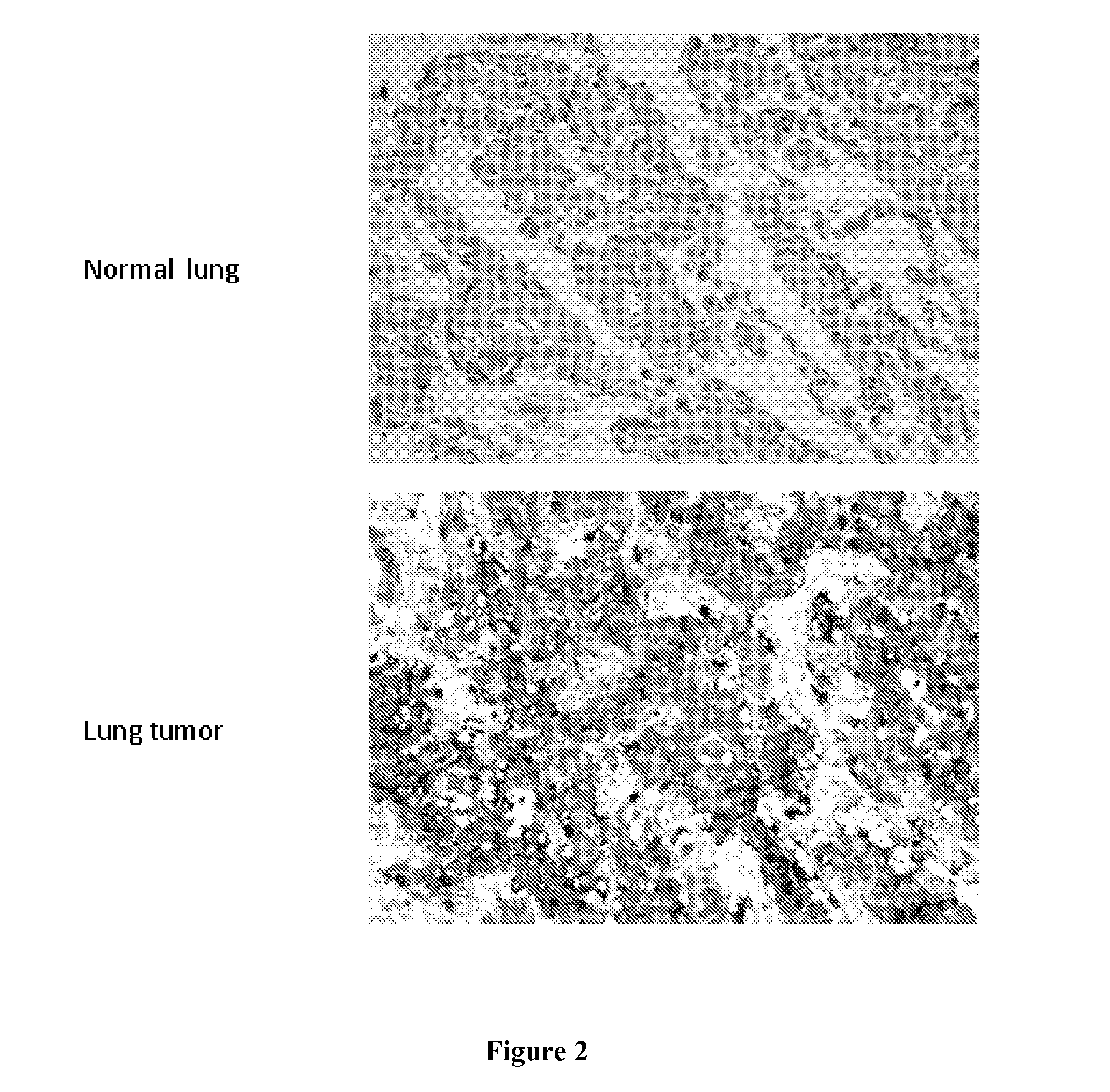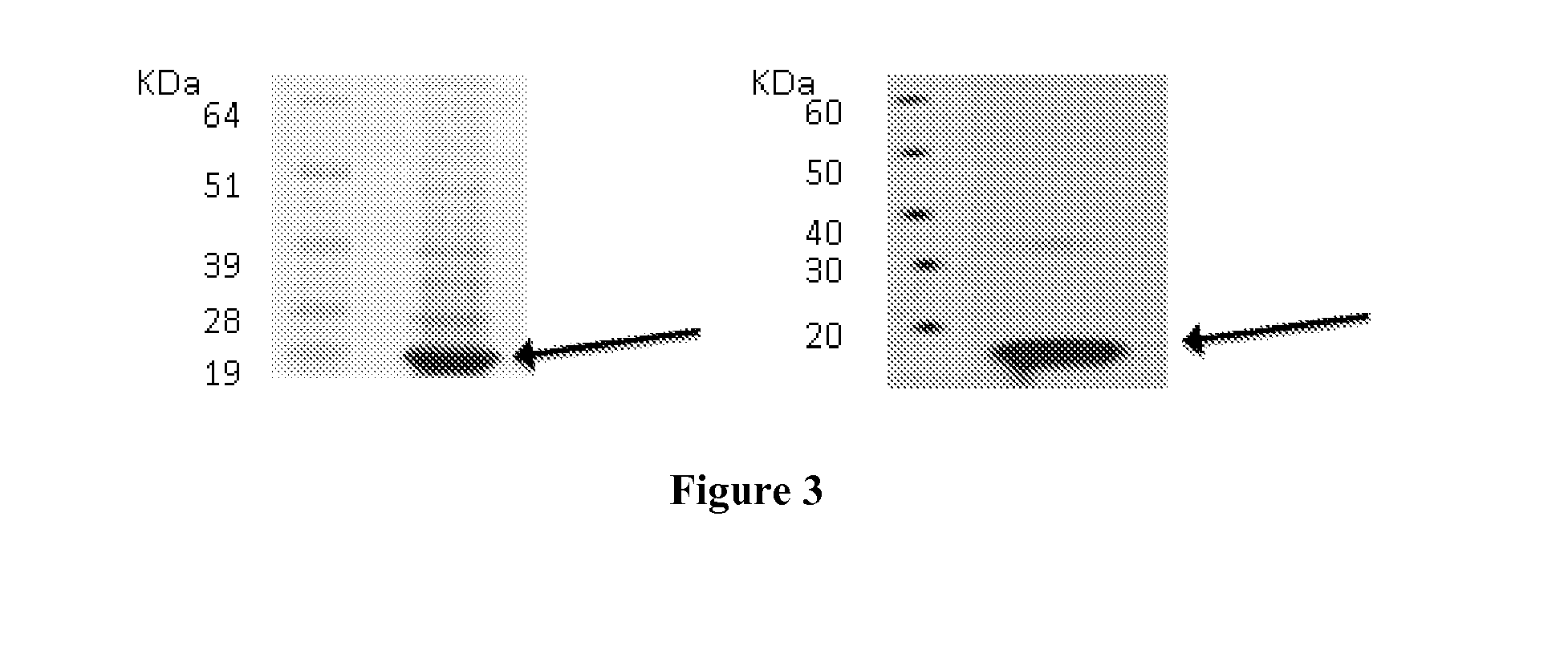Lung Tumor Markers and Methods of Use Thereof
- Summary
- Abstract
- Description
- Claims
- Application Information
AI Technical Summary
Benefits of technology
Problems solved by technology
Method used
Image
Examples
example 1
Generation of Recombinant Human Protein Antigens and Antibodies to Identify Tumor Markers
[0218]Methods
[0219]The entire coding region or suitable fragments of the genes encoding the target proteins, were designed for cloning and expression using bioinformatic tools with the human genome sequence as template (Lindskog M et al (2005). Where present, the leader sequence for secretion was replaced with the ATG codon to drive the expression of the recombinant proteins in the cytoplasm of E. coli. For cloning, genes were PCR-amplified from templates derived from the Mammalian Gene Collection (http: / / mgc.nci.nih.gov / ) clones or from cDNAs mixtures generated from pools of total RNA derived from Human testis, Human placenta, Human bone marrow, Human fetal brain, using specific primers. Clonings were designed so as to fuse a 10 histidine tag sequence at the 5′ end, annealed to in house developed vectors, derivatives of vector pSP73 (Promega) adapted for the T4 ligation independent cloning meth...
example 2
Tissue Profiling by Immune-Histochemistry
[0245]Methods
[0246]The analysis of the antibodies' capability to recognize their target proteins in tumor samples was carried out by Tissue Micro Array (TMA), a miniaturized immuno-histochemistry technology suitable for HTP analysis that allows to analyse the antibody immuno-reactivity simultaneously on different tissue samples immobilized on a microscope slide.
[0247]Since the TMAs include both tumor and healthy tissues, the specificity of the antibodies for the tumors can be immediately appreciated. The use of this technology, differently from approaches based on transcription profile, has the important advantage of giving a first-hand evaluation on the potential of the markers in clinics. Conversely, since mRNA levels not always correlate with protein levels (approx. 50% correlation), studies based on transcription profile do not provide solid information regarding the expression of protein markers.
[0248]A tissue microarray was prepared con...
example 3
Expression of Target Protein in Transfected Mammalian Cells
[0255]Methods
[0256]The expression of target proteins was assessed on eukaryotic cells transiently transfected with plasmid constructs containing the complete coding sequences of the genes encoding the target proteins by Western blot or confocal microscopy. Examples of this type of experiments are given for C9orf46 (corresponding to Transcript ID ENST00000223864), KLRG2 (cloned sequences corresponding to Transcripts ENST00000340940 and ENST00000393039, corresponding to two transcript variants), ERMP1 (cloned sequence corresponding to Transcripts ENST00000339450), SLC39A10 (cloned sequence corresponding to Transcript ENST00000359634).
[0257]For clonings, cDNA were generated from pools of total RNA derived from Human testis, Human placenta, Human bone marrow, Human fetal brain, in reverse transcription reactions and the entire coding regions were PCR-amplified with specific primers pairs. PCR products were cloned into plasmid pc...
PUM
| Property | Measurement | Unit |
|---|---|---|
| Fraction | aaaaa | aaaaa |
| Fraction | aaaaa | aaaaa |
| Fraction | aaaaa | aaaaa |
Abstract
Description
Claims
Application Information
 Login to View More
Login to View More - R&D
- Intellectual Property
- Life Sciences
- Materials
- Tech Scout
- Unparalleled Data Quality
- Higher Quality Content
- 60% Fewer Hallucinations
Browse by: Latest US Patents, China's latest patents, Technical Efficacy Thesaurus, Application Domain, Technology Topic, Popular Technical Reports.
© 2025 PatSnap. All rights reserved.Legal|Privacy policy|Modern Slavery Act Transparency Statement|Sitemap|About US| Contact US: help@patsnap.com



